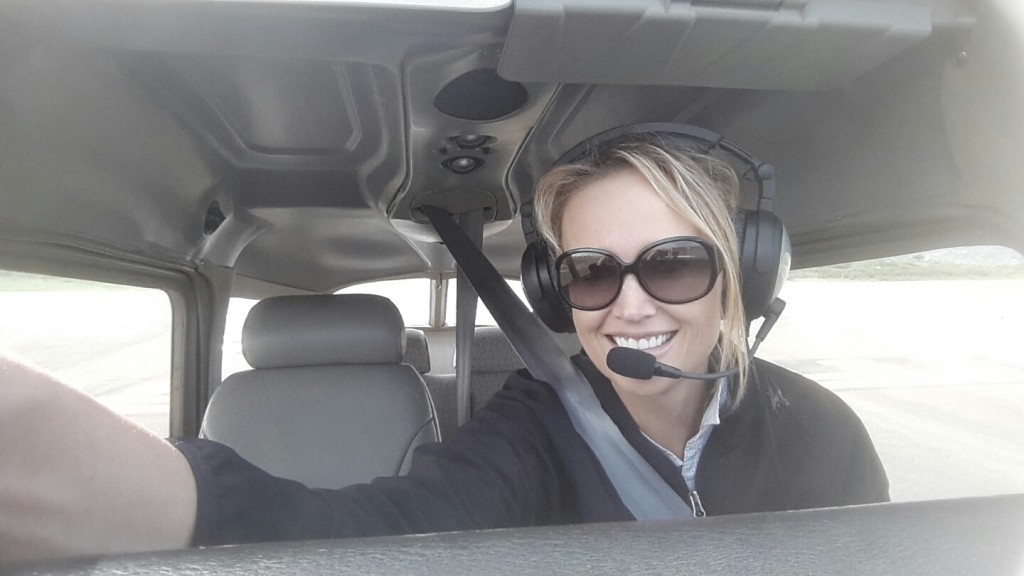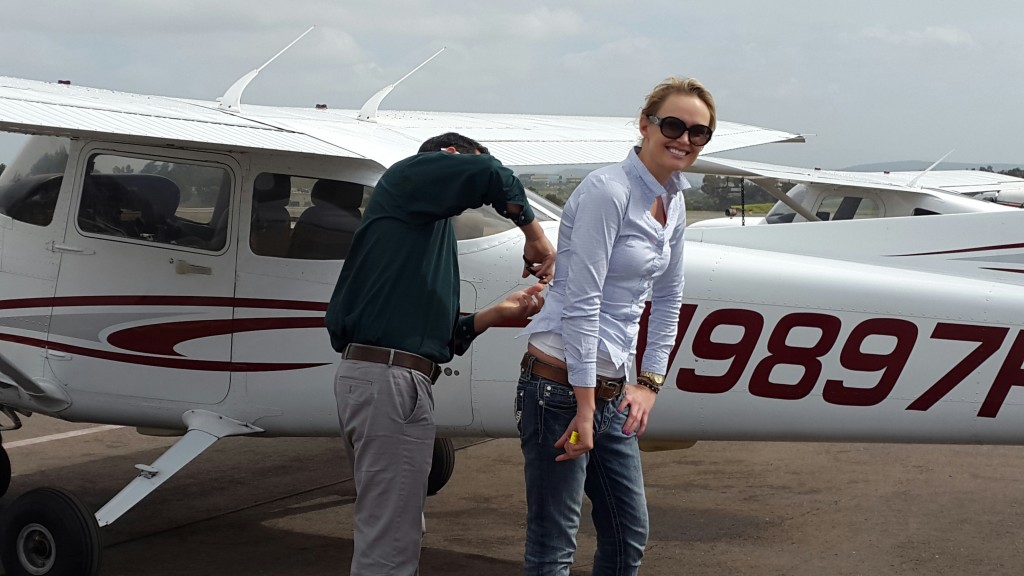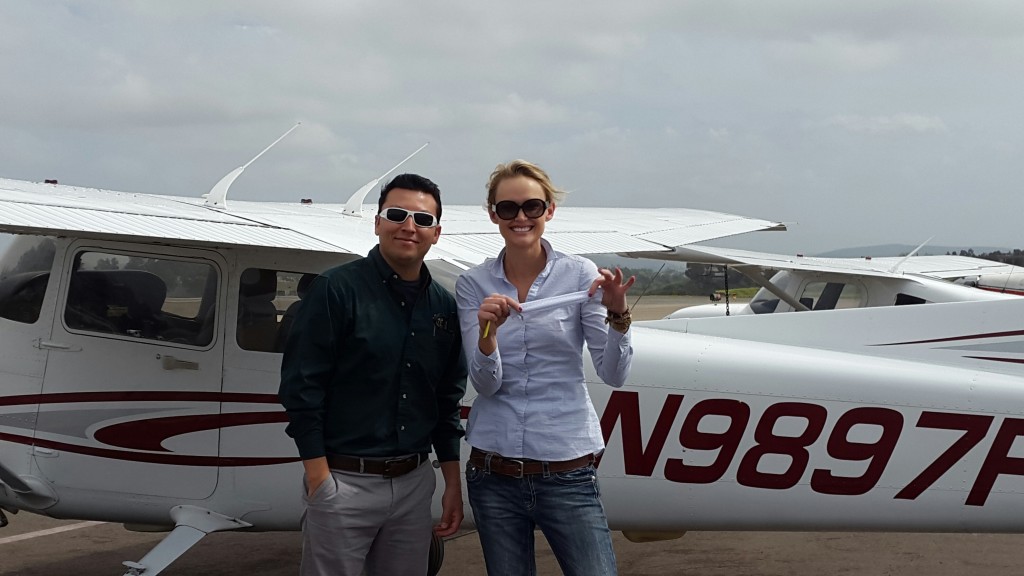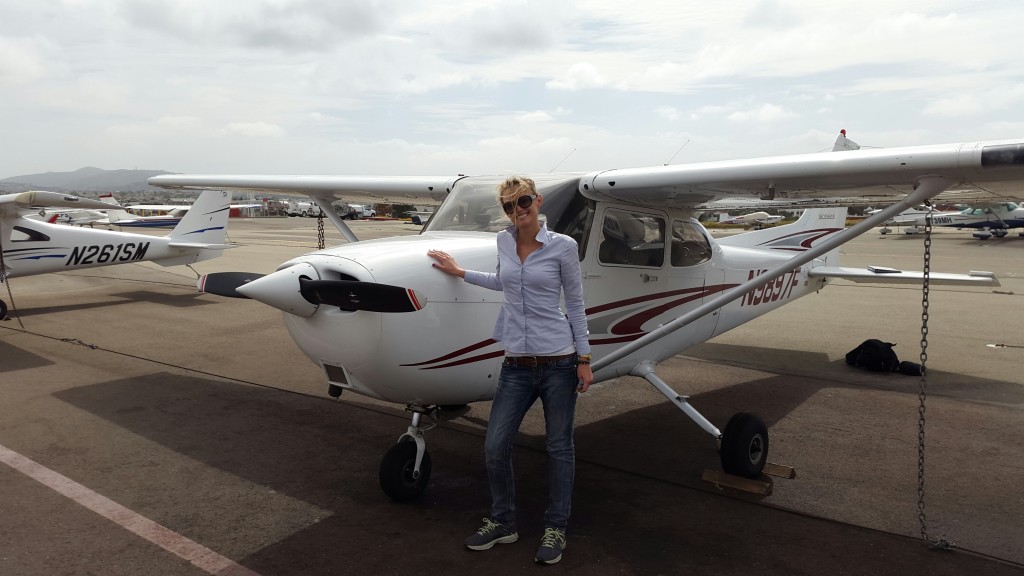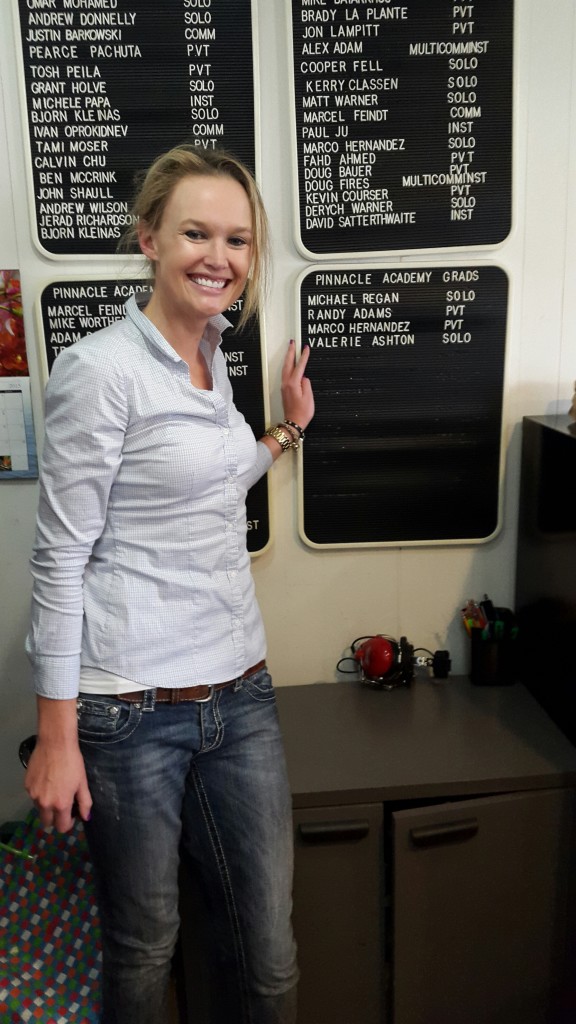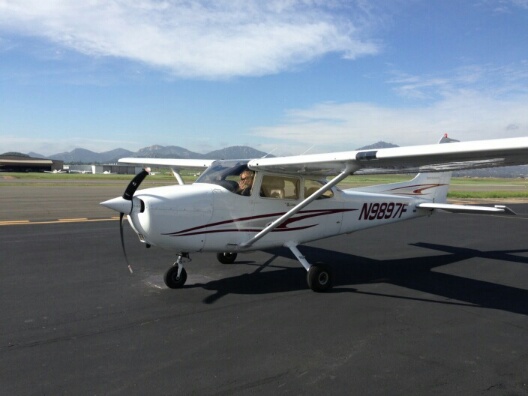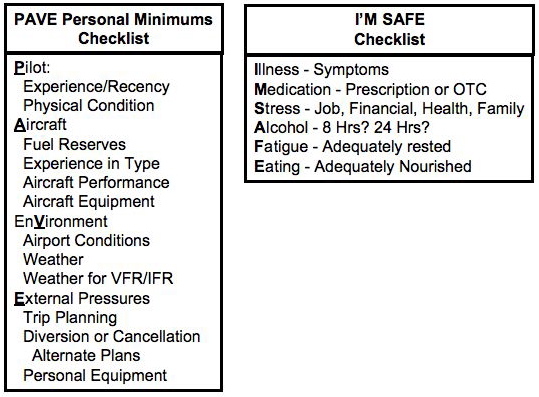Featured Youtube Video
My Latest Instagram Post
Instagram did not return a 200.Categories
- About Me (3)
- Adoptable Pups (1)
- All Things Ava (1)
- Aviation Weather (8)
- Beauty & Fashion (2)
- Business of Aviation (2)
- Child Sexual Abuse (2)
- Cross Country Flying (8)
- Dangerous Drugs (4)
- Dog Rescue (3)
- FAA Dispatcher Exam Prep (3)
- Favorite Things (7)
- Flying Lessons (25)
- Grieving (1)
- Holiday Fun (2)
- Home Decor (2)
- Hotel Reviews (1)
- IFR Written Test (3)
- Inspiration (4)
- Instrument Checkride Preparation (5)
- Legal Marketing (7)
- Life with a Toddler (6)
- Motivation (3)
- Movies (2)
- Music (3)
- Personal Injury Law (6)
- Private Pilot Exam (12)
- Recipes (2)
- Song Meanings (1)
- Taylor Swift (1)
- The Bachelor (1)
- VOR (1)
- Work Travel (1)
Recent Posts
- Save Energy and Save Money ~ Get $10 When you Sign up with OhmConnect!
- 2018 Review: Sheffield School of Aeronautics – Dispatch School in Fort Lauderdale
- Kitchen Table Sanding & Refinishing Project – Dewalt Sander and Minwax Stain
- Pokolodi Lodge Review – Aspen Snowmass, CO
- Aircraft Dispatcher Exam: Lesson Two (Aerodynamics and Aircraft Systems) – Wing Lift Devices
| M | T | W | T | F | S | S |
|---|---|---|---|---|---|---|
| « Jun | ||||||
| 1 | 2 | 3 | 4 | 5 | 6 | |
| 7 | 8 | 9 | 10 | 11 | 12 | 13 |
| 14 | 15 | 16 | 17 | 18 | 19 | 20 |
| 21 | 22 | 23 | 24 | 25 | 26 | 27 |
| 28 | 29 | 30 | ||||
Categories
- About Me
- Adoptable Pups
- Aerodynamics and Aircraft Systems
- All Things Ava
- Aviation Weather
- Beauty & Fashion
- Business of Aviation
- Child Sexual Abuse
- Cross Country Flying
- Dangerous Drugs
- Dog Rescue
- FAA Dispatcher Exam Prep
- Favorite Things
- Flying Lessons
- Grieving
- Holiday Fun
- Home Decor
- Hotel Reviews
- IFR Written Test
- Inspiration
- Instrument Checkride Preparation
- Legal Marketing
- Life with a Toddler
- Motivation
- Movies
- Music
- Personal Injury Law
- Private Pilot Exam
- Recipes
- San Bernardino City Shelter
- Song Meanings
- Taylor Swift
- The Bachelor
- VOR
- Wing Lift Devices
- Work Travel
Understanding True Course, True Heading and the Wind Correction Angle
I am prepping for cross-country and beginning to think everything would be easier if wind didn’t exist. When you’re planning your route, you have to constantly correct for wind. And this involves something called the wind correction angle. It is the difference between the magnetic course you want to fly, and the magnetic heading you actually fly. In order to stay on course to a point, you need to compensate for the effects of the win, and steer the nose of the airplane into the wind. We use our E6B flight computer to find the effect of the wind in regard to ;
Groundspeed (rate of airplane’s progress over the ground)
Airspeed (rate of airplanes progress through the air)
Drift angle (angle between course heading and track)
Heading (the direction in which the nose of the airplane is headed)
Course (the intended path of the airplane over the ground).
Using the wind correction angle and your E6B flight computer, you can convert your true course to your true heading, and also find out what your ground speed will be for your flight. So again in summary, the difference between the magnetic course and the magnetic heading is the wind correction angle.
Carlsbad Solo Flight Video and Cross Country Flight Scheduled for Monday
I meant to share this last week, but didn’t get a chance to because I went to Arizona. I went up and did my third solo flight and first solo “out of the pattern” last week. I brought the GoPro along and got this video in my favorite airplane, N9897F, heading out to Bonsall and the Pauma Valley practice area.
My first cross-country flight is scheduled for Monday! I will be flying from my home airport in Carlsbad to William J Fox Airfield (KWJF) in the Antelope Valley – the northern tip of Los Angeles County. I’ve never been to Fox Field and neither has my instructor, so it will be fun to find it using maps, the iPad, GPS, and good ole’ VORS. I’ve been looking forward to cross-country flying since I started and am so excited it is finally happening!
First Solo Flight – March 18, 2015 – Ramona Airport (KRNM)
Yesterday, a lifelong dream came true – I flew SOLO for the first time! And not even at my home airport, I did my solo at Ramona! We went there because of the cloud cover at Carlsbad. A solo flight consists of three takeoffs and three landings – and they all went great. I was very nervous but as soon as my instructor Andy hopped out, all the training kicked in and I was able to focus. After we got back to Carlsbad, Andy cut the back of my shirt off, a instructor-student solo pilot tradition. This is only the beginning and I cannot wait to see what the future holds, and share the adventure of aviation with family, friends, and lots of rescued canine passengers.
Inflight Emergencies: Knowing what to do if the engine quits
Tomorrow is my pre-solo stage check, second attempt (second go around). I literally had to “go around” after my first landing at French Valley on the last stage check. I landed hard, and bounced. Fortunately, it wasn’t too disastrous, and the only thing that got hurt was my pride. But it definitely wasn’t a safe landing, and I realized I needed some more practice. I’ve had three lessons with my new CFI Andy, and tomorrow is the redo of the practical test portion. Tonight I’m reviewing maneuvers, stalls, slow flight, landings, and emergency procedures. Basically, I needed to be prepared for everything, because the next step is the solo flight.
Inflight Emergency Engine Failure – the ABC’s
I know from reading my Pilot Operating Handbook / Information Manual, that with proper preflight inspections and maintenance, inflight emergencies caused by aircraft or engine malfunction are extremely rare. Still, it’s important to know what to do, because my life is at stake, as well as the lives of my passengers and people on the ground. It’s easy to recite a list of procedures on the ground, but it’s harder to remember everything when it’s actually happening. That’s why we have acronyms, and checklists.
A=AIRSPEED (Best Glide Speed – 65 KIAS). Pitch and maintain so as to stay aloft as long as possible.
B=BEST LANDING AREA. Look for a safe, flat and level area to land, keeping in mind that it may be underneath you or behind you. Immediately start heading towards that area and commit to it
C= CHECKLIST. This is situation permitting. If you are 500 feet above ground, you may not have time to pull out your checklist. But if you are 4,000 feet in the air, you should attempt an engine restart if possible. I learned to use the “7-UP Checklist”, start at the bottom and think of the shape of the number “7”.
Fuel Shutoff Valve – On
Fuel Selector – Both
Mixture – Full Rich
Throttle – Power Set
Master – On
Aux Fuel Pump – On
Ignition – Start
Assuming the engine does not restart, Squawk 7700 and make a Mayday call on 121.5. Do not add flaps until you know you have the field made. Here is a video that I found helpful:
Managing Risk While Flying – The PAVE and I’M SAFE Checklists
Yesterday, I wrote about Single Pilot Resource Management, one of the first things that I anticipate will be discussed in my upcoming stage check. There are six aspects of SRM, they are task management, automation management, risk management, aeronautical decision making, situational awareness, and controlled flight into terrain awareness. Today, I wanted to review more closely Risk Management, and specifically the PAVE and I’M SAFE Checklists
The FAA and my flight school are big on risk management, and they rightly should be. Many aircraft accidents happen because pilots do not identify risks and are caught off-guard by something that could have been anticipated. The FAA recognizes that two pilots with the same certification might have different levels of experience and comfort, and even though they have the same rights to fly, they should have different personal minimum standards. The PAVE checklist addresses personal minimums.
The I’M SAFE checklist addresses the personal minimums of the pilot. Are you sick, medicated, stressed out, under the influence of alcohol, fatigued or tired, and have you eaten recently. If you are worked up about something, running on zero sleep, starving because you haven’t eaten all day, or sick, you shouldn’t fly. Everytime, it is better to be safe than sorry.
Single Pilot Resource Management ~ The 6 Components You Must Remember
 In my upcoming presolo stage check, one of the first topics I know I will be tested on is Single-Pilot Resource Management. After all, I’m going to have to do this when I solo, so I better know what it is. This is the art and science of managing your resources – all by yourself. Resources can be onboard the aircraft and from outside sources. There are six components of SRM. They are:
In my upcoming presolo stage check, one of the first topics I know I will be tested on is Single-Pilot Resource Management. After all, I’m going to have to do this when I solo, so I better know what it is. This is the art and science of managing your resources – all by yourself. Resources can be onboard the aircraft and from outside sources. There are six components of SRM. They are:
Task Management
Automation Management
Risk Management
Aeronautical Decision Making
Situational Awareness
Controlled Flight into Terrain Awareness
 Situational Awareness is taking into consideration all factors such as traffic, weather, fuel state, aircraft mechanical condition, and my own fatigue level that may have an impact on the successful completion of the flight. When I’m flying around, whether it’s local or cross country, I’ve got to manage all the technology in the aircraft as well as radio and navigation tasks. I need to be able to manage risk and make accurate and timely decisions. Sometimes in order to make decisions, I will need to gather information and analyze it. I also need to know what to do in an emergency, such as a radio failure or an engine failure. There might not be one best correct answer as to what to do in a particular situation – or there might be. I’ve got to analyze each situation in light of my experience level, personal minimums, and current physical and mental condition.
Situational Awareness is taking into consideration all factors such as traffic, weather, fuel state, aircraft mechanical condition, and my own fatigue level that may have an impact on the successful completion of the flight. When I’m flying around, whether it’s local or cross country, I’ve got to manage all the technology in the aircraft as well as radio and navigation tasks. I need to be able to manage risk and make accurate and timely decisions. Sometimes in order to make decisions, I will need to gather information and analyze it. I also need to know what to do in an emergency, such as a radio failure or an engine failure. There might not be one best correct answer as to what to do in a particular situation – or there might be. I’ve got to analyze each situation in light of my experience level, personal minimums, and current physical and mental condition.
In life, I have gotten overwhelmed at a number of stressful situations. If I’m overwhelmed when I’m flying, I could panic and completely and totally forget what to do. I might make the wrong decision or a careless mistake that could put my life or the lives of other innocent people on the ground at risk. Flying is serious business. I’ve got to take it seriously and remain cool as a cucumber and calm under pressure, just as any professional badass pilot would do.
Tomorrow night I will talk more about Risk Management, including the PAVE checklist and the I’M SAFE checklist. So much to remember.
Private Pilot Pre-Solo Stage Check Study Notes
Private Pilot Pre-Solo Stage Check Study Notes
My pre-solo stage check is a week from Monday, and I’ve been studying lots. Here are more questions… and the correct answers.
1. Which Aircraft Has The Right of Way?
A. A Rotorcraft
B. An Aircraft In Distress
C. An Airship
2. Which Best Describes Density Altitude?
A. Pressure Altitude Corrected For Non-Standard Temperature
B. Your Actual Height Above Sea-Level
C. What You Would Read When Your Altimeter Is Set To 29.92
3. How Long Are TAFs Usually Valid For?
A. 48 Hours
B. 8 Hours
C. 24 Hours
Notes: TAF is used as a weather forecast over an area, airport or station predicting and telling the meteorological conditions, such as winds, precipitations, storms, clouds, temperature. The TAF has a valid period of 24 hours and it is updated every 24hours or daily. Therefore, the Information display on the TAF is longer and bigger than the METAR info.
4. What Should You Squawk If You Lose Radio Communications?
A. 7500
B. 7700
C. 7600
5. Which Is NOT a Type of Class E Airspace?
A. Off-Shore
B. WAC (World Aeronautical Chart)
C. Surface
6. Define The Following METAR: KGNV 101439Z 15010G17KT 10SM OVC011 23/21 A2979
A. Metar for the gainesville airport on the 10th at 1439z winds 150 at 10 gusting to 17 with 10sm of visibility. Overcast at 1,100. temp 23 dewpoint 21 altimeter 29.79
B. Metar for the gainesville airport on the 10th at 1439z winds 010 at 15 gusting to 17 with 10sm of visibility. Overcast at 1,100. temp 23 dewpoint 21 altimeter 29.79
C. Metar for the gainesville airport on the 10th at 1439z winds 150 at 10 gusting to 17 with 10sm of visibility. Overcast at 11,000. temp 23 dewpoint 21 altimeter 29.79
7. Which is NOT a Characteristic of an Aft CG?
A. Lower Stall Speed
B. Higher Cruise Speed
C. More Stable
8. What is VOR an Acronym For?
A. Vertical Orientation Route
B. Very High Frequency Omni-Range
C. Victor and Obstacle Readings
9. When Do You NOT Need a Mode C Transponder?
A. Above Class C Airspace
B. Below Class C Airspace
C. Inside Class C Airspace
10. What is Calibrated Airspeed (CAS)?
A. Indicated Airspeed Corrected For Installation and Instrument Error
B. The Actual Speed of Your Aircraft Through The Air
C. The Airspeed Read Directly Off The Indicator
Pinnacle Aviation Academy Private Pilot Progress Check Flight Recap
Yesterday, I had my flying progress check with David Lowther, the chief flight instructor at Pinnacle Aviation Academy. It was my first real evaluation of everything I have learned so far, and although it wasn’t perfect, it went pretty well. We started out with a chat in his office, and talked about my goals for becoming a pilot, how I found Pinnacle, and how happy I was with my experience and instructor. Then David asked me some questions about flight and aerodynamics, and although I knew some of the answers, I also realized it there is so much still to learn.
For the progress check, we did a thorough preflight inspection of Zero Eight Zulu, my Cessna 172R, which was a good opportunity for me to ask questions about how things work and specific things I should be looking for when I do my preflight. The engine start went well, and I correctly called the ground ATC and got authorization to taxi. Dave told me I taxi’d the airplane a little bit fast, so I will make extra effort on future flights to take my time down the taxiway, and not be a speed racer. The runup checklist and preflight briefing went great, as did my takeoff. By now I feel pretty comfortable with the whole process from starting the plane to getting in the air. We did a right downwind departure and flew out to Bonsall, where I demonstrated slow flight. That went fine, but I completely forgot about my flaps when recovering from slow flight, so I spent about 30 seconds trying to figure out why the airplane wasn’t speeding up. After that, we flew down along Interstate 15 where I did a forward slip to lose 2,000 feet. Then I did ground reference and flew about Lake Hodges at 2,500 feet. Finally, we headed back to CRQ and did a left base landing.
David said I passed my check and said if I keep coming 2-3 times a week, I should have my solo done within two months, maybe sooner. There were will be another pre-solo stage check, and I very much want to be prepared for that – it would be awful to fail. So, before I forget, here are some of the things I was rusty on in the oral exam portion of the progress check yesterday.
Torque: (1) A resistance to turning or twisting. (2) Forces that produce a twisting or turning motion. (3) In an airplane, the tendancy of the aircraft to turn (roll) in the opposite direction of rotation of the engine and propeller.
Torque Effect: This involves Newton’s Third Law of Physics – for every action, there is an equal and opposite reaction. Applied to the airplane, this means that as the internal engine parts and the propeller are revolving in one direction, an equal force is trying to rotate the airplane in the opposite direction. It is greatest when at low airspeeds with high power settings and a high angle of attack.
Adverse Yaw: When turning an airplane to the left for example the downward deflected aileron on the right produces more lift on the right wing. Since the downward deflected right aileron produces more lift, it also produces more drag, while the opposite left aileron has less lift and less drag. This added drag attempts to pull or veer the airplane’s nose in the direction of the raised wing (right); that is it tries to turn the airplane in the direction opposite to that desired. This undesired veering is referred to as adverse yaw.
Obviously, there is much more to learn for my private pilot exam and checkride, but those were the big takeaways from yesterday. I also need to go over the many types of drag, but I’ll save that for another blog post.
January 4th Flight Lesson Recap :: Ground Reference and Steep Turns
I had another flight lesson today in my little favorite plane N9897F. My instructor John and I flew out to Valley Center, did a few stalls, worked on ground reference (turns around a point and S-turns) and also steep turns, the last maneuver before my stage check. Steep turns are important because they teach you how to control bank and pitch simultaneously, and how to equally divide your attention inside and outside the plane. To do steep turns you need to be aware of the position of the nose, the horizon, the wings, and the amount of bank you are applying – all while the plane is turning very rapidly. If the nose goes up, you have to increase or decrease the back-elevator pressure. I found I also had to adjust the power to keep airspeed.
With all maneuvers, you select your minimum entry altitude (at least 1,500 feet AGL) and make sure the area is clear of traffic by executing clearing turns and firing off a position report on the air-to-air frequency. Then you bug your heading, and smoothly roll into the bank angle. As you establish the turn, you apply back elevator pressure to increase the angle of attack. This increase in the angle of attack results in an increase in drag. You have to add a bit of power to maintain entry altitude and airspeed.
One thing I’ve learned the last few months is I am not a fan of pulling g’s. After feeling them in pilot training I have no desire to get on a roller coaster, although I think a roller coaster is nothing compared to what I’ve felt in a Cessna. I’m going up again tomorrow, hopefully to do steep turns for the last time and be done with Stage 2. My big stage check with the senior instructor is scheduled for Wednesday!
December 29th Flying Lesson Recap – Turns Around a Point
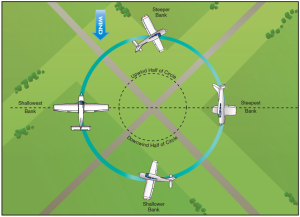 I had another flying lesson yesterday, and I almost got sick again! I have not thrown up in the cockpit, but I’ve come very close. Too close. The extremely close call, a few weeks ago, happened when we were practicing power off stalls. Those freaked me out big time and the sickness I felt was definitely fear-related. But now, those stalls are no big deal. It’s funny how something can be so scary at first, and as you practice it more and more, it becomes easy.
I had another flying lesson yesterday, and I almost got sick again! I have not thrown up in the cockpit, but I’ve come very close. Too close. The extremely close call, a few weeks ago, happened when we were practicing power off stalls. Those freaked me out big time and the sickness I felt was definitely fear-related. But now, those stalls are no big deal. It’s funny how something can be so scary at first, and as you practice it more and more, it becomes easy.
Yesterday, we worked on turns around a point, just one of the many training maneuvers I need to do to get my pilot’s license. This maneuver is exactly what it sounds like. You’re flying over something, probably some sort of landmark. Yesterday, the landmark was a water tower in Valley Center. As part of the exercise, I had to fly the Cessna in three complete circles of uniform distance using a maximum bank of approximately 45 degrees while maintaining constant altitude. The motion sickness I felt yesterday definitely had to do with looking at the point on the ground and constantly shifting my attention between the traffic in front of me, the point on the ground, and my instruments (the airspeed indicator, altimeter, and heading indicator). It is multi-tasking at it’s best. Good thing I wasn’t texting while doing all that.
According to my Airplane Flying Handbook, there are several reasons we learn how to fly urns around a point. They are to further perfect our turning technique, to perfect the ability to subconsciously control the airplane while dividing attention between the flight path and ground references, to develop a keen perception of altitude, and to perfect the ability to correct for wind drift while in turns.
For turns around appoint, you have to take into account the wind. You enter the turn on the downwind During the downwind half of the circle the nose of the plane is turned toward the inside of the circle, and during the upwind half, the nose is turned toward the outside. I think the biggest challenge for me will be gaining or losing altitude, and learning to divide my attention equally between the flight path and ground references and instruments.
I’m flying again on Saturday, and I’m going to nail it! After that, I have to do steep turns, and then it will be time for my big stage check, all leading up to my solo. I can’t wait!


